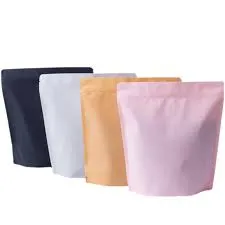Email: enid@bc-pak.com
Tel: 86-757- 88811186
- Afrikaans
- Albanian
- Amharic
- Arabic
- Armenian
- Azerbaijani
- Basque
- Belarusian
- Bengali
- Bosnian
- Bulgarian
- Catalan
- Cebuano
- chinese_simplified
- chinese_traditional
- Corsican
- Croatian
- Czech
- Danish
- Dutch
- English
- Esperanto
- Estonian
- Finnish
- French
- Frisian
- Galician
- Georgian
- German
- Greek
- Gujarati
- haitian_creole
- hausa
- hawaiian
- Hebrew
- Hindi
- Miao
- Hungarian
- Icelandic
- igbo
- Indonesian
- irish
- Italian
- Japanese
- Javanese
- Kannada
- kazakh
- Khmer
- Rwandese
- Korean
- Kurdish
- Kyrgyz
- Lao
- Latin
- Latvian
- Lithuanian
- Luxembourgish
- Macedonian
- Malgashi
- Malay
- Malayalam
- Maltese
- Maori
- Marathi
- Mongolian
- Myanmar
- Nepali
- Norwegian
- Norwegian
- Occitan
- Pashto
- Persian
- Polish
- Portuguese
- Punjabi
- Romanian
- Russian
- Samoan
- scottish-gaelic
- Serbian
- Sesotho
- Shona
- Sindhi
- Sinhala
- Slovak
- Slovenian
- Somali
- Spanish
- Sundanese
- Swahili
- Swedish
- Tagalog
- Tajik
- Tamil
- Tatar
- Telugu
- Thai
- Turkish
- Turkmen
- Ukrainian
- Urdu
- Uighur
- Uzbek
- Vietnamese
- Welsh
- Bantu
- Yiddish
- Yoruba
- Zulu
Easy Peel Roll Stock Film
Views :
Update time : Feb . 12, 2025 11:56
Food packaging plays a pivotal role in preserving product freshness, ensuring safety, and enhancing consumer convenience. As consumer demands evolve, so do the ingenious ways to package food. Here's an insightful look at ten different types of food packaging, each serving its unique purpose and offering distinct advantages.
6. Modified Atmosphere Packaging (MAP) By altering the atmospheric composition inside the packaging, MAP extends the freshness of perishable products such as meats and vegetables. It inhibits microorganism growth, thus broadening the distribution reach and minimizing food wastage. 7. Bags and Sacks As some of the oldest packaging forms, bags and sacks have evolved from simple jute and burlap to advanced multi-layered materials. Perfect for bulk storage of grains, flour, and sugar, modern bags often incorporate moisture barriers to maintain product quality. 8. Canned Packaging Renowned for its long shelf life and durability, canned packaging is indispensable for preserving fruits, vegetables, and protein sources like fish. Canning involves airtight sealing that effectively halts spoilage, ensuring nutrients remain intact. 9. Clamshell Packaging Frequently used in the sale of fresh produce, bakery items, and small snacks, clamshells combine visibility with protection. These clear, plastic containers allow consumers to view the freshness and quality of the product without compromising on protection. 10. Edible Packaging At the forefront of innovation, edible packaging offers an eco-friendly solution by reducing waste. Made from food-grade materials like seaweed, rice, or starch, these packages can dissolve or be consumed, creating a sustainable cycle that appeals to environmentally conscious consumers. Each packaging type presents unique benefits tailored to the product's demands, ultimately enriching user experience. The evolution of packaging technologies continues to offer improved safety, accessibility, and sustainability, aligning with consumer preferences and industry's ongoing commitment to quality and innovation. In the dynamic world of food packaging, staying informed about the latest materials and methods is imperative for businesses seeking to uphold a competitive edge, ensuring that products do not merely reach consumers intact, but also engage and satisfy their evolving needs.


6. Modified Atmosphere Packaging (MAP) By altering the atmospheric composition inside the packaging, MAP extends the freshness of perishable products such as meats and vegetables. It inhibits microorganism growth, thus broadening the distribution reach and minimizing food wastage. 7. Bags and Sacks As some of the oldest packaging forms, bags and sacks have evolved from simple jute and burlap to advanced multi-layered materials. Perfect for bulk storage of grains, flour, and sugar, modern bags often incorporate moisture barriers to maintain product quality. 8. Canned Packaging Renowned for its long shelf life and durability, canned packaging is indispensable for preserving fruits, vegetables, and protein sources like fish. Canning involves airtight sealing that effectively halts spoilage, ensuring nutrients remain intact. 9. Clamshell Packaging Frequently used in the sale of fresh produce, bakery items, and small snacks, clamshells combine visibility with protection. These clear, plastic containers allow consumers to view the freshness and quality of the product without compromising on protection. 10. Edible Packaging At the forefront of innovation, edible packaging offers an eco-friendly solution by reducing waste. Made from food-grade materials like seaweed, rice, or starch, these packages can dissolve or be consumed, creating a sustainable cycle that appeals to environmentally conscious consumers. Each packaging type presents unique benefits tailored to the product's demands, ultimately enriching user experience. The evolution of packaging technologies continues to offer improved safety, accessibility, and sustainability, aligning with consumer preferences and industry's ongoing commitment to quality and innovation. In the dynamic world of food packaging, staying informed about the latest materials and methods is imperative for businesses seeking to uphold a competitive edge, ensuring that products do not merely reach consumers intact, but also engage and satisfy their evolving needs.
Recommend products
Read More >>
Related News
Read More >>













